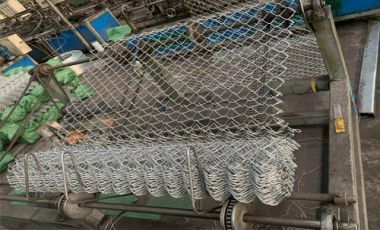
Coal mine chain link fence is also one of the mine chain chain fences. It is mainly used in the coal mine industry. The use is very important. The main points are as follows:
1. Avoid the appearance of the coal mine slipping and ensure normal mining.
2. Coal mine chain link fence is to avoid static electricity, avoid the occurrence of sparks and cause fires and cause accidents.
3. Coal mine chain link fence weaving is very solid, not easy to break.
Coal mine chain link fence can be divided into mine diamond support mesh, galvanized diamond mesh, mine support mesh, galvanized chain link fence, mine chain link fence. It has an excellent protective effect on insisting on the safe production of mines, avoiding mine accidents, participating in mine rescue and rescue, and carrying out mine safety.
Weaving and Features?
Crocheted, uniform mesh, flat mesh surface, beautiful and generous, wide mesh width, thick wire diameter, not easy to corrode, long life, concise weaving, beautiful and useful, strong tensile force, advanced resistance features. Solve the problem that the hand-woven net or the woven net is often loose and easy to hang when supporting the roof and coal gang. It has the advantages of high strength of the whole and side nets, it is not easy to be torn when connected to the net, the construction is convenient, and the cost is low.
Usefulness?
Ideal information for coal mine foundation road protection, roof protection, and false roof construction. In particular, the galvanized diamond-shaped woven mesh is connected by wire mesh, and even if one wire is cracked, it will not affect the others. It completely solves the problems of simple laxity and easy hanging of the roof when supporting the roof and coal gang. It is the most ideal material for coal mine foundation road protection, roof protection and roadway support.
Address: No. 1738, 17th Floor, No. 1 Mall, Shangdu Road, Zhengdong New District, Zhengzhou City, Henan Province, China
Email: zxminesupport@zxsteelgroup.com
Tel: +86-199 3712 3680
© 2020 ZXSTEELGROUP